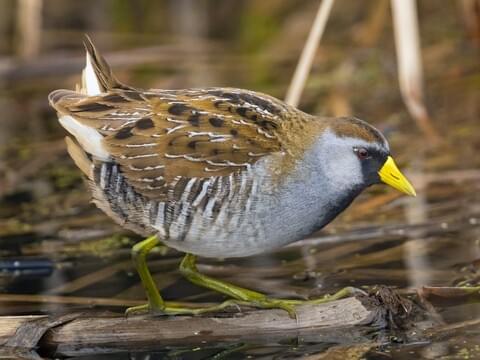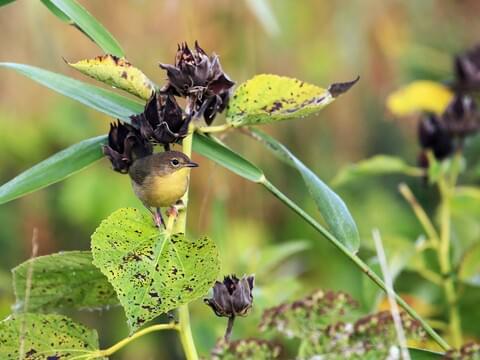Page 1 of 4
Ornithology B/C
Posted: October 14th, 2019, 4:01 pm
by Nooran008
Well no one's really started this one, and I felt that somebody should, so here we are. I'm new here so I hope I'm not doing anything wrong, but anyway, let's get this started!
1) What is this bird? (Common name and scientific please)

2) What is it's diet?
3) What is it's
order? (not family)
Re: Ornithology
Posted: October 14th, 2019, 4:07 pm
by Here
Nooran008 wrote: ↑October 14th, 2019, 4:01 pm
Well no one's really started this one, and I felt that somebody should, so here we are. I'm new here so I hope I'm not doing anything wrong, but anyway, let's get this started!
1) What is this bird? (Common name and scientific please)

2) What is it's diet?
3) What is it's
order? (not family)
1. Sora / Porzana carolina
2. Seeds, insects, snails (omnivore)
3. Gruiformes
Re: Ornithology
Posted: October 14th, 2019, 4:13 pm
by Nooran008
Here wrote: ↑October 14th, 2019, 4:07 pm
Nooran008 wrote: ↑October 14th, 2019, 4:01 pm
Well no one's really started this one, and I felt that somebody should, so here we are. I'm new here so I hope I'm not doing anything wrong, but anyway, let's get this started!
1) What is this bird? (Common name and scientific please)

2) What is it's diet?
3) What is it's
order? (not family)
1. Sora / Porzana carolina
2. Seeds, insects, snails (omnivore)
3. Gruiformes
Nice! Your turn!
Re: Ornithology B/C
Posted: October 14th, 2019, 4:55 pm
by Here
1. What bird is this? (common name is fine)

2. What is this bird's conservation status?
3a. What is one main difference between males and females of this species?
3b. Is the bird depicted a male or a female?
Re: Ornithology B/C
Posted: October 15th, 2019, 1:46 pm
by Nooran008
Here wrote: ↑October 14th, 2019, 4:55 pm
1. What bird is this? (common name is fine)

2. What is this bird's conservation status?
3a. What is one main difference between males and females of this species?
3b. Is the bird depicted a male or a female?
1. Common Yellowthroat
2. Least Concern
3a. Males have a black stripe going around their head, while females do not have this feature.
3b. Female
Re: Ornithology B/C
Posted: October 15th, 2019, 7:33 pm
by Here
Nooran008 wrote: ↑October 15th, 2019, 1:46 pm
Here wrote: ↑October 14th, 2019, 4:55 pm
1. What bird is this? (common name is fine)

2. What is this bird's conservation status?
3a. What is one main difference between males and females of this species?
3b. Is the bird depicted a male or a female?
1. Common Yellowthroat
2. Least Concern
3a. Males have a black stripe going around their head, while females do not have this feature.
3b. Female
Correct, your turn!
Re: Ornithology B/C
Posted: October 16th, 2019, 3:15 am
by Nooran008
Okkkkkk

1.What type of bird is this?(common name)
2a. What is the main distinction between a juvenile and full-grown version of this bird?
2b. Which age is shown in the picture? (juvenile or full-grown)
3. What is the conservation status of this bird?
Re: Ornithology B/C
Posted: October 16th, 2019, 1:12 pm
by Dwu1011
Nooran008 wrote: ↑October 16th, 2019, 3:15 am
Okkkkkk

1.What type of bird is this?(common name)
2a. What is the main distinction between a juvenile and full-grown version of this bird?
2b. Which age is shown in the picture? (juvenile or full-grown)
3. What is the conservation status of this bird?
1. Black-crowned Night Heron
2a. Adults have all black bills while juveniles have yellow-and-black bills.
2b. Full grown
3. Least Concern
Re: Ornithology B/C
Posted: October 16th, 2019, 1:30 pm
by GurtYo
I've never done this before, so hopefully the image works!

1. ID
2. Diet
3. Conservation Status
4. Range
I tried to find a picture where the lighting sucks

Re: Ornithology B/C
Posted: October 16th, 2019, 4:17 pm
by Dwu1011
GurtYo wrote: ↑October 16th, 2019, 1:30 pm
I've never done this before, so hopefully the image works!

1. ID
2. Diet
3. Conservation Status
4. Range
I tried to find a picture where the lighting sucks

Id: Sora
Diet: Seeds, snails and other aquatic invertebrate
Conservation Status: Least Concern
Range: Most of temperate North America. From the Northwest territories to the Arizona and New Mexico
I hope I got it right.




